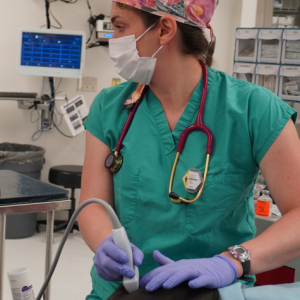Indirect lymphangiography for canine mast cell tumors
Mast cell tumor (MCT) is a common cutaneous and subcutaneous neoplasia in dogs. It can metastasize to lymph nodes (LNs), and this adversely affects the prognosis and treatment. The study aimed to evaluate the sentinel lymph node (SLN) mapping of MCTs with radiographic indirect lymphography.
Dogs that underwent clinical staging were prospectively enrolled. Lipiodol was injected around the MCT or the surgical scar. After 24 h, LNs that picked up contrast were radiographically assessed.
Twenty-six dogs with 29 MCTs were included in the study. MCTs were confirmed histologically, while SLNs were evaluated either by cytology and/or histology. SLNs were detectable in 23 dogs with 26 MCTs. Lymphatic vessels were visible in 19 MCTs. In nine MCTs, at least two SLNs picked up contrast. Seven MCTs involved two SLNs, and two MCTs involved three different SLNs. In nine MCTs, at least one SLN was metastatic.
This study indicates that the lymph drainage pattern of the MCTs may be different for each MCT, and more than one SLN can be involved. Indirect lymphangiography with Lipiodol allowed the detection of the SLN in 90% of MCTs. In conclusion, these data provided clinically relevant information to remove the LN and stage the patient.
Andrea De Bonis, et al. “Sentinel Lymph Node Mapping with Indirect Lymphangiography for Canine Mast Cell Tumour.” Vet Sci. 2022 Sep 8;9(9):484. doi: 10.3390/vetsci9090484.













List
Add
Please enter a comment